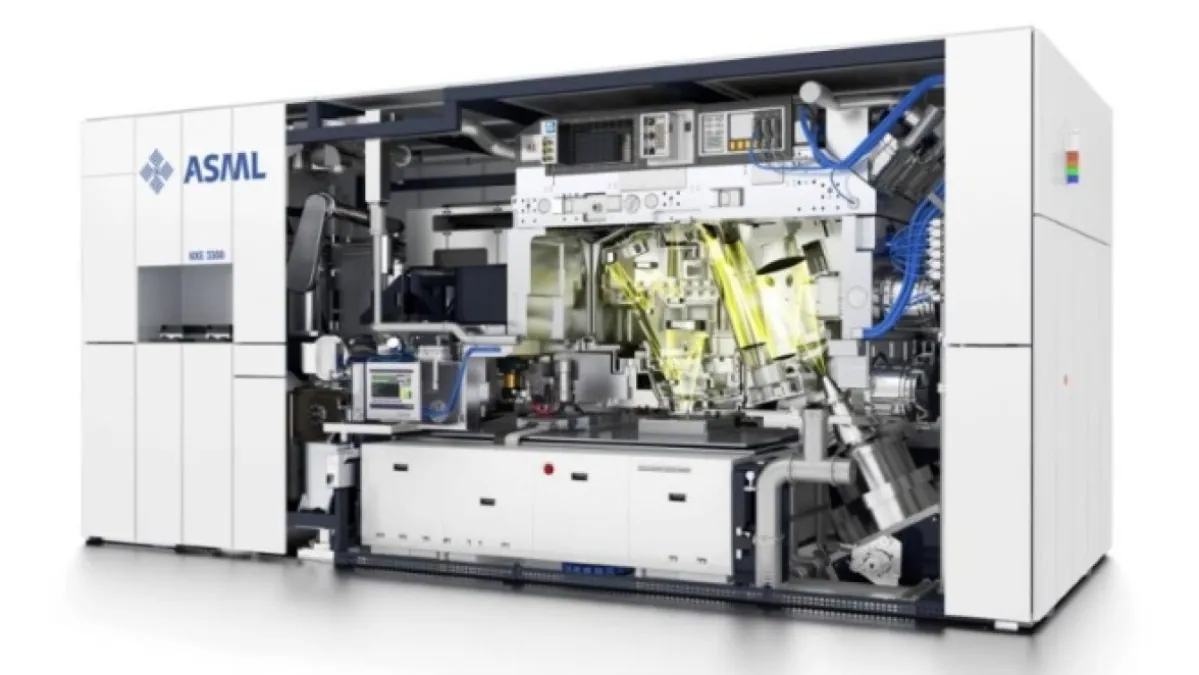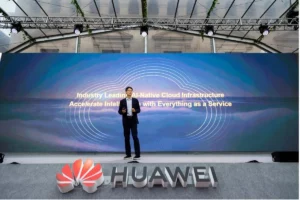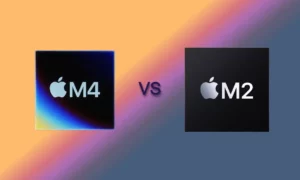Introduction:
In the fast-paced world of semiconductor manufacturing, innovation is key to meeting the ever-increasing demands for smaller, more powerful chips. ASML, a leader in lithography technology, has recently achieved a significant milestone by integrating ASML high-NA technology into a low-NA EUV tool, resulting in the groundbreaking NXE:3800E.
Low-NA EUV: This is the current standard, using a 0.33 numerical aperture (NA) and offering a resolution of around 13nm. This is sufficient for manufacturing 5nm and 7nm chips, but struggles at the 3nm node.
High-NA EUV: This is the future, with a 0.55 NA and an 8nm resolution. It’s still under development but promises significant improvements for future chips.
Follow us on Linkedin for everything around Semiconductors & AI
High Vs Low NA EUV
| Aspect | High NA EUV | Low NA EUV |
|---|---|---|
| Numerical Aperture (NA) | Higher NA (typically >0.5) | Lower NA (typically <0.5) |
| Resolution | Higher resolution | Lower resolution |
| Depth of Focus | Shallower depth of focus | Deeper depth of focus |
| Image Contrast | Higher image contrast | Lower image contrast |
| Throughput | Typically lower throughput | Typically higher throughput |
| Cost | Higher cost due to complexity | Lower cost due to simpler optics |
| Mask Complexity | More complex mask designs | Less complex mask designs |
| Scanner Complexity | More complex scanner optics and systems | Less complex scanner optics and systems |
| Reticle Size | Smaller reticle size | Larger reticle size |
| Defectivity Sensitivity | Higher sensitivity to defects | Lower sensitivity to defects |
| Energy Consumption | Higher energy consumption | Lower energy consumption |
| Source Power | Requires higher source power | Requires lower source power |
These differences impact various aspects of lithography processes such as resolution, depth of focus, throughput, cost, and complexity of the equipment. High NA EUV tends to offer finer resolution and higher image contrast but requires more complex and costly optics, while low NA EUV sacrifices some resolution for increased throughput and cost-effectiveness.
Why ASML is Seeping High-NA EUV Technology into Low-NA Tools
The interesting bit is that ASML is incorporating some of the technological advancements developed for High-NA EUV into their Low-NA EUV machines. This includes:
- More powerful wafer stages: High-NA tools require these to compensate for throughput limitations. These stages are now being integrated into Low-NA EUV systems.
- More efficient light source: This improves the throughput of the Low-NA tool.
The benefits of this technology transfer for Low-NA EUV include:
- Increased Throughput: The Low-NA EUV system can now process more wafers per hour.
- Improved Overlay: This refers to how precisely layers are aligned during the chipmaking process. Better overlay leads to higher yields (more usable chips).
Overall, this is a way for ASML to improve its current Low-NA EUV offerings while they ramp up production of their next-generation High-NA EUV machines.
ASML is integrating some of their High-NA EUV advancements into their current Low-NA EUV machines for a few reasons:
- Enhance Existing Products: By incorporating these next-gen improvements, ASML can boost the capabilities of their current Low-NA EUV systems. This translates to benefits for chipmakers like increased throughput (processing more wafers) and improved overlay (better chip yields).
- Maintain Market Edge: The semiconductor industry is constantly pushing for smaller, faster chips. While High-NA EUV is the future, Low-NA EUV is still widely used for current chip production (5nm and 7nm). These improvements help ASML stay competitive in the Low-NA EUV market while they develop High-NA EUV for future needs.
- Bridge the Gap: High-NA EUV is under development and won’t be in full production for some time. By integrating these advancements into Low-NA EUV, ASML can offer chipmakers a way to partially bridge the gap until High-NA EUV becomes available.
In essence, ASML is leveraging their High-NA EUV learnings to improve their current offerings, maintain a competitive edge, and provide a smoother transition for chipmakers as they move towards future chipmaking technologies.
Enhanced Throughput and Precision:
The NXE:3800E boasts impressive processing capabilities, with a throughput of over 220 wafers per hour (wph) at a dose of 30 mJ/cm2, a significant improvement over its predecessor, the NXE:3600D.
Additionally, its machine-matched overlay of just 0.9 nm enhances precision and performance, setting new standards in chip manufacturing.
Read More: Chat with Any PDF: Powered By ChatGPT – techovedas
Overcoming High-NA Optics Challenges:
High-NA optics typically encounter throughput limitations due to wider angles of light incidence, leading to potential light loss.
ASML’s innovative approach addresses this challenge by increasing magnification and implementing anamorphic optics, maintaining the exposure field while enhancing throughput.
Backward Compatibility and Cost Efficiency:
ASML’s commitment to commonality ensures that components developed for high-NA systems remain fully backward compatible with low-NA systems, streamlining manufacturing processes and reducing costs—an essential factor in the competitive semiconductor industry.
Read More: NVIDIA Reveals Most Powerful Chip for AI: Blackwell Beast – techovedas
Efficiency Enhancements:
Contrary to misconceptions, the increased throughput of the NXE:3800E is not solely due to faster stage movements.
ASML leverages a more efficient light source, significantly boosting EUV output without increasing energy input, thereby enhancing throughput while reducing energy consumption.
Environmental Impact and Energy Savings:
The NXE:3800E’s reduced energy consumption contributes to ASML’s efforts towards sustainability.
By using less power while increasing throughput, the tool achieves energy savings of 20-25 percent per wafer, aligning with initiatives aimed at achieving net-zero emissions in the semiconductor industry.
Read More: Upto 240% Return: Top 10 Indian Semiconductor Stocks in Last 1 year – techovedas
Future Prospects:
ASML integration of high-NA technology into a low-NA EUV tool represents a significant milestone in lithography technology.
With chipmakers embracing these advancements, we can anticipate further breakthroughs that will drive the industry forward, propelling chip manufacturing into a new era of possibility and potential.
Conclusion:
The introduction of the NXE:3800E marks a transformative moment in chip manufacturing, signaling a paradigm shift in capabilities.
ASML’s relentless pursuit of innovation continues to push the boundaries of lithography technology, paving the way for unprecedented advancements in semiconductor manufacturing.




